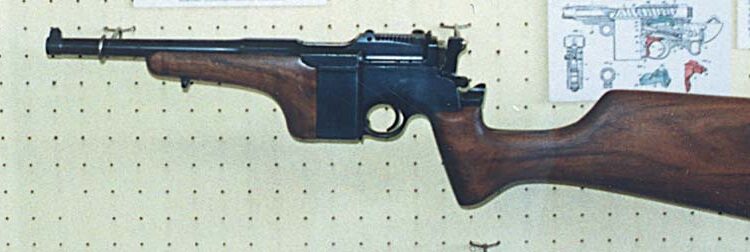By Dan Shea
The names of some cities in the world can’t help but conjure images that extend beyond their mere geographic location. When you hear the name Detroit you think of cars, Pittsburgh you think of steel, and when the average gun enthusiast mentions “Oberndorf” you know he is talking about firearms-usually bolt action or automatic rifles. Nestled in the Neckar river valley, Oberndorf is found in the Black Forest region of southwest Germany. Relatively undamaged by the explosive unpleasantness of WWII, Oberndorf is not only a charming picturesque town, but is also home to the world titans of arms production and design: Mauser and Heckler&Koch.
Oberndorf has a long history of producing military small arms. Founded in 1811 by King Frederich the First of Wuerttemberg as an arsenal to produce muskets for his army, the facility was typical of many factories that sprang up during the Industrial Revolution. As the years rolled by the arsenal kept abreast of changing small arms technology as infantry longarms evolved from the crude flintlock musket, to percussion rifles, and then breechloaders. For generations the arsenal was a source not only of local pride but was the foremost employer in the area. Following Otto von Bismarck’s unification of Germany the factory at Oberndorf became a symbol of national pride when two brothers, Wilhelm and Paul Mauser (mostly the younger Paul), created what became the standard by which all other military rifles were judged-the 1898 Model Mauser Rifle.
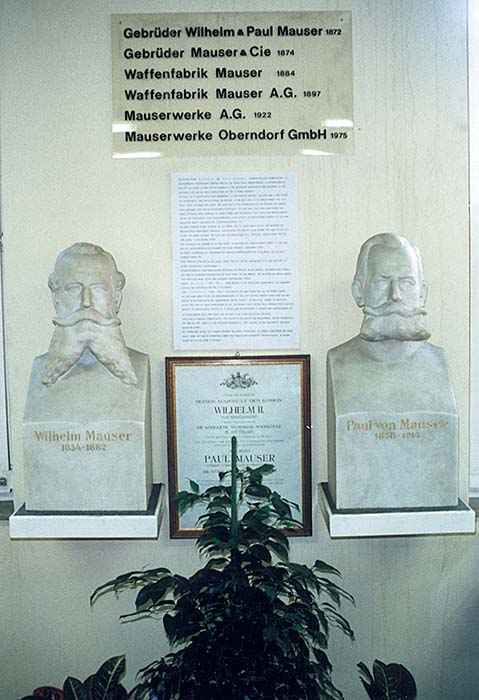
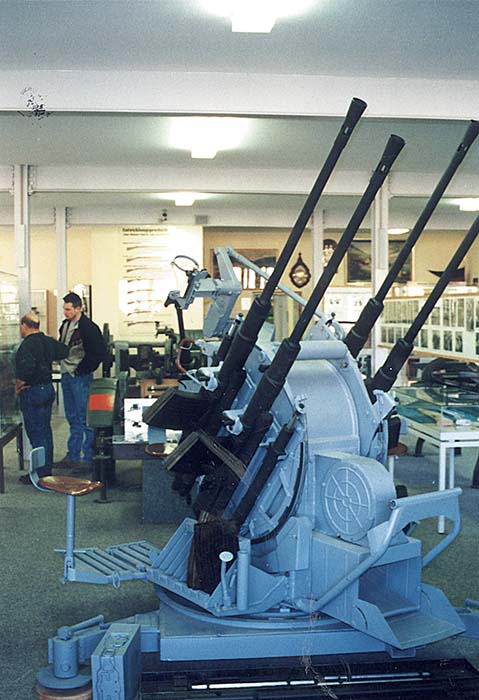
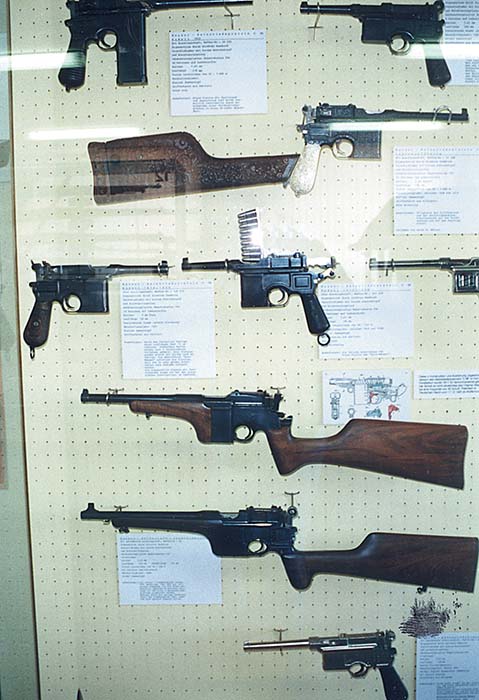
The 1898 Mauser and the designs which preceded it, made the name of Mauser a household word across the globe and the worlds armies beat a path to Oberndorf . Also during this period the Mauser factory produced not only the best rifle extant, but also the first successful self-loading pistol, the venerable C96 “broomhandle”. The C96 was not designed by Paul Mauser but he recognized the pistol’s potential and immediately snapped it up. During WWI the factory went all out to supply the German army with enough Gewehr 98’s to send into the meatgrinder of the trenches.
Following Germany’s defeat in 1918 the Mauser factory underwent some dramatic changes. The Treaty of Versailles effectively banned most weapons production so the factory produced sewing machines, calibration instruments, adding machines, and even made some automobiles! This was just a brief hiatus however, as Hitler’s rise to power and the rearmament of the Third Reich soon changed all this.
During WWII Mauser not only produced the battle proven Model 98, now shortened and re-christened the Model 98k carbine, but a plethora of other weapons such as sniper rifles, 2 cm-Flak 38 anti-aircraft guns, component parts for the StG44, G-41(M), Gewehr 33/40, and even made 10,000 German copies of the STEN gun. Surprisingly the factory was only bombed once during the course of the war and then only the power plant was hit. During the course of the conflict and the gradual defeat of the Nazi’s, the quality of the weapons produced fell as the demands of the conflict imposed great strains upon the German war machine. Steel and other essential raw materials became more and more difficult to obtain due to the Allied bombing campaign and the liberation of formerly occupied countries.
As in WWI the Germans were again defeated however this time the whole of Germany was divided up into zones of occupation by the victorious Allies. Oberndorf, and the area surrounding it, fell into the French zone. The French wasted no time in enjoying the fruits of victory and moved most of the Mauser factory machinery and tooling back to France as reparations of war. Before they left though, they demolished about 50% of the factory buildings in Oberndorf.
After the war, industry, not only in Oberndorf, but all of Germany struggled to get back on its feet. While Mauser would never again be the industrial giant it once was, a new firm utilizing new technologies would emerge from the ruins of the Mauser Works- Heckler&Koch. Founded in 1949 by former executives of Mauser, H&K initially produced machine parts but shortly thereafter became involved in weapons design and production. Using the Spanish CETME rifle as its foundation (which was based directly on the Nazi’s StG-45 assault rifle) the engineers at H&K created the G-3 rifle which was adopted by the German Bundeswehr and a host of other nations. As most readers of SAR already know the G-3 is the tree from which many other H&K weapons grew.
The Waffenmuseum or “Weapons Museum” in English does a splendid job in portraying the history of small arms production in Oberndorf. The museums displays demonstrate excellent, in most cases pristine examples of small arms produced in Oberndorf ranging from early smooth bore flintlocks to the current G-36 assault rifle. The museum is located on the third floor of a building that at one time produced Luger pistols. In Germany the Waffenmuseum is often called by collectors the “Mauser Museum” which is not really correct. The museum per se is not really affiliated with any company but displays examples of both Mauser and H&K weapons. Most of the weapons in the museum though are Mauser.
The museum is a large rectangular room featuring exhibits laid out chronologically in a clockwise manner. Closest to the entrance are examples of the early muskets and percussion rifles produced by the Royal Arsenal followed by mint unfired specimens of Dreyse Needle Guns. The museum does an excellent job of showing prototypes and development models of various attempts to create a reliable repeating infantry rifle prior to the invention of the Mauser design. With few exceptions these prototypes were in outstanding condition and looked as though they had just been manufactured.
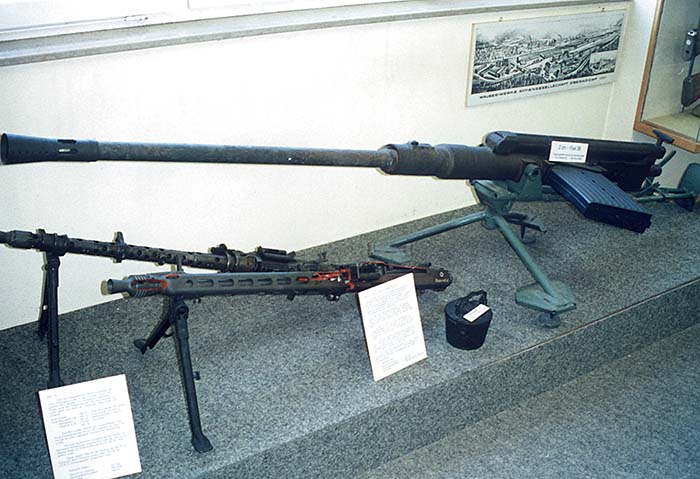
Interspersed among the rifle cases were displays of the various pistols produced by Mauser particularly one of my favorites: the C96 “Broomhandle”. I don’t know exactly why I have a soft spot for the “Broom”. It’s ungainly, unbalanced, and slow to load, but nevertheless presents a classic elegance seconded only by the Colt Peacemaker and the P08 Luger. There are a number of excellent examples of the C96 including a Red Nine, Schnellfeuer, Conehammers, Flatsides, and several unusual carbine variants that I have never seen before.
Following the C96 display were some of the many variants of 1889, 1893, 1895, and 1898 Mauser rifles. Admittedly the museum has some holes in the Mausers’ development and production. Part of this is due to the vast numbers and countless variants the factory produced over the years. Also the demands of fighting a major world war would take precedence over keeping a large inventory of collectable but firing serviceable rifles. Additionally the French Army tramping all over countryside disarming the locals and rummaging through the Mauser Works certainly didn’t help either. Nevertheless there are some interesting Mauser bolt guns such as a 98k high turret sniper, Gewehr 33/40, a Gewehr 98 with trench mag, 13 MM bolt action WWI “Tankgewehr” and many others. As nice as some of these rifles were, to me, they still fall into the category of “primitive weapons”. I made a hasty dash for the automatics.
One of the unique things about the Waffenmuseum is not the number of exhibits but number of exhibits NOT behind glass. For instance the 13 MM Tankgewehr was sitting on a table were it could be picked up and the bolt worked (yeah, it’s still there). In one display (not behind glass) was a cutaway MG-42 and a uncut MG-34 next to a well used 20 MM Flak 38 automatic cannon. Out of respect I didn’t touch them but this was unusual to see in a small arms museum. Next to the MG-42 was a case containing component parts for one of the Wehrmachts “flammenwerfer” (flamethrower), an MG-81, several late war “Volksturm” crude last ditch bolt action rifles, and one of the STEN copies that Mauser produced for the Wehrmacht. Actually the Mauser copy looked to be made better than the original British gun.
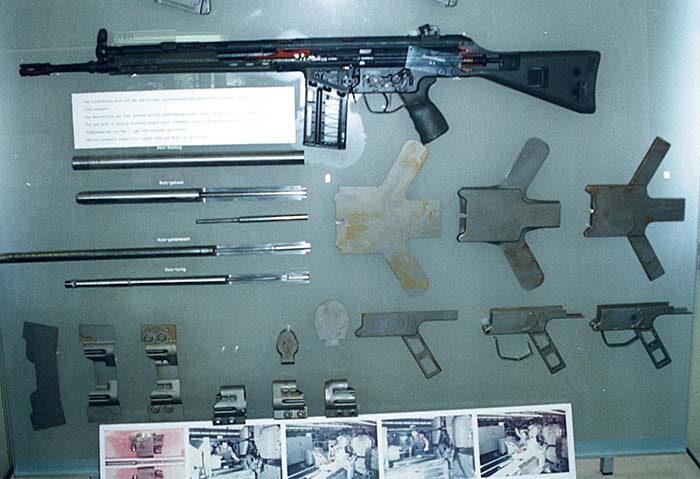
By now an already interesting museum was getting better as I moved to the display case containing a nice (98%) StG-44 and one of the original CETME prototypes from which the G-3 was designed. Unfortunately no StG-45 was to be found but several photo layouts on the wall insured that its importance was not forgotten. There are two CETME prototypes and it is worth going to the museum just to see them. Each had a Mauser type tangent rear sight instead of the drum aperture that is more commonly found on the G-3/HK-91. They also had bipods which when folded performed the role of a handguard and flash suppressors that had holes instead of flutes.
Doing an about face brought to view a wonderful display board showing the machining and stamping fabrication steps of the G-3’s major components. My German friends tell me that this is a new addition to the museum. Also shown was a complete cutaway (what the Germans call a “schnittmodell”) of a G-3. If you ever wondered just how your G-3 or HK-91 was made, seeing this exhibit board is a must.
The final thrill in the tour was seeing an actual HK G-11 caseless rifle alongside the G-3’s replacement the 5.56X45 MM G-36. The G-11 was originally supposed to replace the G-3 and I’ve heard several rumors in Germany why it didn’t. What was amazing is that 40 feet from the caseless cartridge firing G-11 lay other rifles that used the caseless cartridge system which were also produced in Oberndorf-black powder muzzle loaders! For a brief time the world of small arms design had definitely gone full circle!
Do I recommend this Museum? Absolutely. If you are planning a trip to Europe I would encourage you to swing by Oberndorf. Not only is it in the middle of some very scenic countryside but the Waffenmuseum houses some very interesting and historical weapons. The only downside is the Waffenmuseum has very short visiting hours: Wednesday’s and Saturday’s from 2 PM-4 PM, and Sunday from 10 AM-12 noon. The Waffenmuseum is located at Klosterstrasse 14, Oberndorf, Germany. Admission is free but there is a donation box. Auf wiedersehen!
| This article first appeared in Small Arms Review V2N7 (April 1999) |



